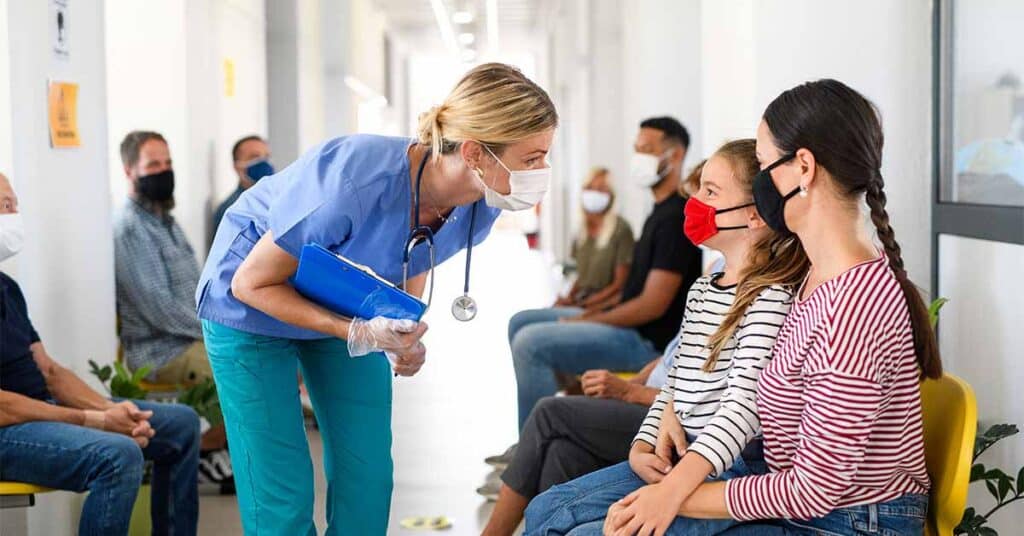Public Health Clinic
Public health clinics, also known as Public clinics, share specific objectives with free clinics. They work to make primary care accessible to marginalized groups by removing obstacles like cost and lack of insurance. Additionally, Public health clinics pay close attention to the demographics of the area they serve to ensure that individuals can access the necessary medical care regardless of their cultural or linguistic obstacles.
Free clinics and Public health clinics in Burnaby have several things in common. Still, there is a fundamental difference between the two as well. A free clinic is made possible through volunteers and contributions from businesses, whereas, public health clinics are often operated and funded by the government through federal jurisdiction.

What a Public Health Clinic Does
A Public health clinic in Burnaby offers various services to the Public’s residents.
- To those with little or no income in the Public, it offers primary care, preventative care, essential dental treatment, and pharmaceutical care.
- Chronic illnesses, including HIV/AIDS, asthma, diabetes, obesity, and depression, can all be managed with assistance.
- Reducing the need for ambulance or emergency department visits helps prevent local hospitals from being overworked.
- It can assist the healthcare system as a whole in generating considerable savings by offering preventative treatment and encouraging healthy lives.
- It offers various auxiliary services to ensure that people can obtain the treatment they require. These include organizing transportation, offering translation services, helping with general health and wellness education, and more.
- A Public health clinic can also offer case management, ensuring that patients get the complete range of treatment needed for their diseases.

The Free Health Clinic and the Public Health Clinic in Burnaby
It’s necessary to draw a clear difference between a public health clinic and a free clinic to provide a comprehensive understanding of what each clinic offers.
The two kinds of clinics are comparable in many respects.
- Their fundamental goal is to ensure that people within the public domain that are in need have access to primary care and chronic illness management.
- Public and free clinics both significantly reduce the load on nearby emergency rooms or hospitals. As well as customize their services to the required needs of the public.
The primary distinction is that Public health clinics are run by the government and have public health specialists working there. On the other hand, free clinics are often staffed by volunteers and supported by financial and in-kind donations from the corporate sector. There are also some other differences.
- Public health clinics in Burnaby are subject to federal supervision. Whereas free clinics vary in regulatory controls and are subject to many operators.
- The method for referrals is likewise different. A free clinic refers patients to whichever local physicians volunteer, and a public health clinic would refer patients to an outside provider (such as an eye doctor).
- Additionally, there are variations in funding and payout. Services at a local health clinic are paid for by outside parties. Services at a free clinic are typically provided without charge; however, clients may be asked to make modest contributions as they are able.
Women’s Health Clinics
Women’s health clinics address the physical and physiological demands that are specific to women. This type of clinic may provide a wide range of treatments since every woman has distinct requirements depending on their age, upbringing, racial or cultural identity.

Services Offered at a Women’s Health Clinics
These clinics provide their patients with a variety of specialized services.
- Most women’s health clinics offer primary care. However, women may access a women’s health clinic for ease and comfort because the primary focus is female health. Additionally this is a place that may offer nutritional assistance tailored to the requirements of women.
- Patients may get general education and diagnostic screenings for breast cancer, cervical cancer, and other health conditions that affect women in a women’s health clinic.
- A clinic for women’s health could also provide reproductive health services, such as family planning, access to contraceptives, and testing for HIV/STDs.
- These clinics frequently offer an entire range of obstetric and gynaecological services. Prenatal and postpartum care are also available to women, and for breastfeeding mothers, lactation counselling is occasionally provided.
- Patients may also obtain assistance in a women’s health clinic environment with premenopause, menopause, and other associated issues.
Additional Psychosocial Support
Some women who go to clinics deal with difficult circumstances, such as unintended pregnancies (including pregnancies brought on by rape), domestic violence, addiction, and more. Clinics exist to advance patients’ overall health and well-being. In some cases, connecting them to other services that can provide higher degrees of psychological care may be necessary. This can entail directing patients to a counsellor, lawyer, or even a member of police enforcement, depending on the circumstance.
